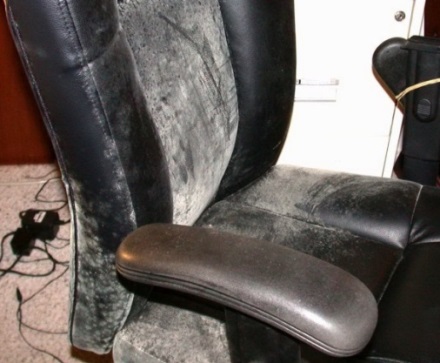Homeowner Newsletter: Winter 2018-2019
©2019 Jeffrey C. May
Apartments and condominiums in a multi-unit building can develop their own particular air-quality problems. Here are some tips to help you keep the air in your home within a multi-unit building as allergen free and contaminant free as possible.
Heating/Cooling: If your unit has univents that supply heat and cooling, be sure they are serviced on the recommended schedule, and that they have pleated-media filters that are airtight at the perimeter so that no air can bypass the filter. If your unit has baseboard convectors (with fin tubing), there should be no dust on the fins. The fin tubing can be HEPA vacuumed first and then blasted with steam from a steam-vapor machine. If you have a Whalen unit, remove the top grille and with a mirror and flashlight check the interior of the supply plenum for dust; due to humid conditions in the plenum, mold often grows in the dust.
Common Areas
Hallways: As you walk down the hallway to get to your own front door, you are exposed to any hallway contaminants or allergens, particularly if there is carpeting. And if there is a gap under your front door, hallway air can flow into your apartment. If you see any conditions in the hallway that concern you, report these conditions to your Association or to the Property Manager/maintenance personnel. Add a sweep or gaskets to your front door as needed to make it airtight. (In some buildings, though, the gap is purposeful to allow in “fresh” air from the hallway that is supplied there; kitchen and bathroom exhausts in the apartment pull in the hall air.)
The basement: Basement conditions can have an impact on first-floor units (due to air flows around pipes, ducts, etc.).

If the basement in your building smells musty or if you see visible mold growth, report the condition to the Association or Property Manager/maintenance personnel. The space may have to be cleaned/remediated, and then the relative humidity more adequately controlled in the future.
The garage: Soot particles and combustion products (including carbon monoxide) from an underground garage can travel on air flows up elevator shafts. In such a building, the elevator entry door should not open up directly into the garage but rather be located in a vestibule with an airtight door.
The Flow of Air: Air flows in a building from the bottom to top and out, especially in the heating season (warm air rises). Air also flows from spaces with higher air pressure to spaces with lower air pressure. This means that smoke and/or cooking odors can travel into your home from other units in the building.
To determine the source of odor infiltration, you could put a window fan on exhaust in a window (with all other windows closed) and sniff at floor, wall and ceiling openings (including electric switches and outlets) to see where the odor is strongest. Then seal as needed. You can also try to increase the air pressure in your apartment by operating a window fan or two on supply (not a great option in cold weather, though). Another option in a building with a whole-building exhaust system (no “on/off” switches in your unit) is to temporarily cover the operating kitchen and bathroom exhaust diffusers when the odor infiltration seems strong. This will make air infiltration from the hall less likely.
In the end, if you are having a problem with smoke and cooking odors where you live, you may just have to move. First, though, seek legal counsel to find out your rights in this situation.
Final Words: In a multi-unit building, the air you breathe inside your own unit can be flowing from other parts of the building. If you have allergies, asthma or other environmental sensitivities, you may want to consider living in a single family, if possible, so you will have more control of the conditions inside your “building envelope.” Refer to our book Jeff May’s Healthy Home Tips for more advice on creating a healthier indoor environment; book is available on amazon.com.
We wish you a happy and healthy 2019.
